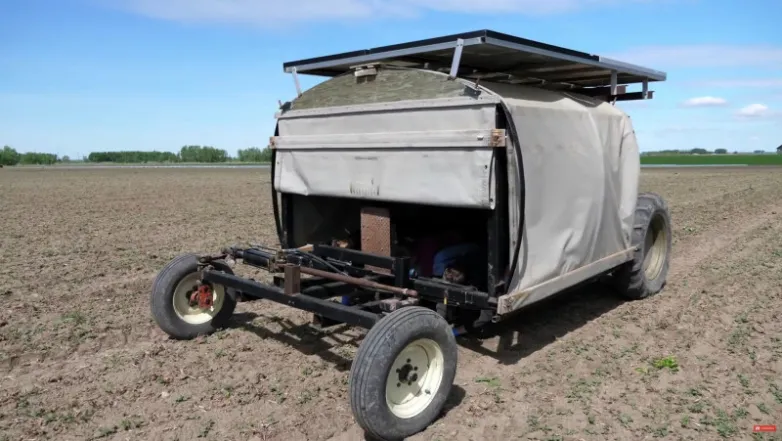Solar powered weeding tractor uses manual labour
Oct 16, 2019 11:27 AM ET

You might not have realised this, but there’s a group of hackers out there without whom you wouldn’t be able to put food on the table. They hack under the blazing sun and pouring rain, and have been doing it for thousands of years. Known more commonly as farmers, their creative problem solving skills with whatever is lying around can be absolutely jaw dropping. [Andrew Mans] is one such individual. He built a solar powered weeding tractor that uses human labour to do the actual weeding.
We’ll be honest, this made us go “Wait, what?” for a few seconds, until the ingenuity of it all sank in. Crawling at a snails pace across the onion fields at Mans Organics, the contraption allows 3 workers to lie comfortably on their stomachs in a shaded tent, while pulling weeds that grow too close to the crop for conventional mechanised weeding methods. While this might seem like a slightly crappy job at first glance, there are definitely worse jobs a farm (or in an office) and actually looks quite relaxing. While the picking could of course be automated, this is no small task, especially when your business is food production, not robotics.
Power is provided from four 250 W solar panels on the roof, which charge a bank of deep cycle batteries and the drive train. A pure sine wave converter provides power to a 240 V motor driver which turns it back into DC to run the drive motor. [Andrew] admits this back and forth voltage conversion is overcomplicated and inefficient but it’s the sort of thing that quickly happens when you hack a hacked design. The axle and 5-speed gearbox was salvaged from an old 3 ton truck and is mounted vertically to save space. The hydraulic steering is controlled by one of the human weed pickers, who just makes small course corrections as required.
We love the weird combo of old and new in this hack. Check out the machine in action and detailed walk-around after the break.
For true automation we’ve seen more than one agricultural robot, and this year’s Hackaday prize again had an agricultural IoT system in the semi-finals.
Also read

